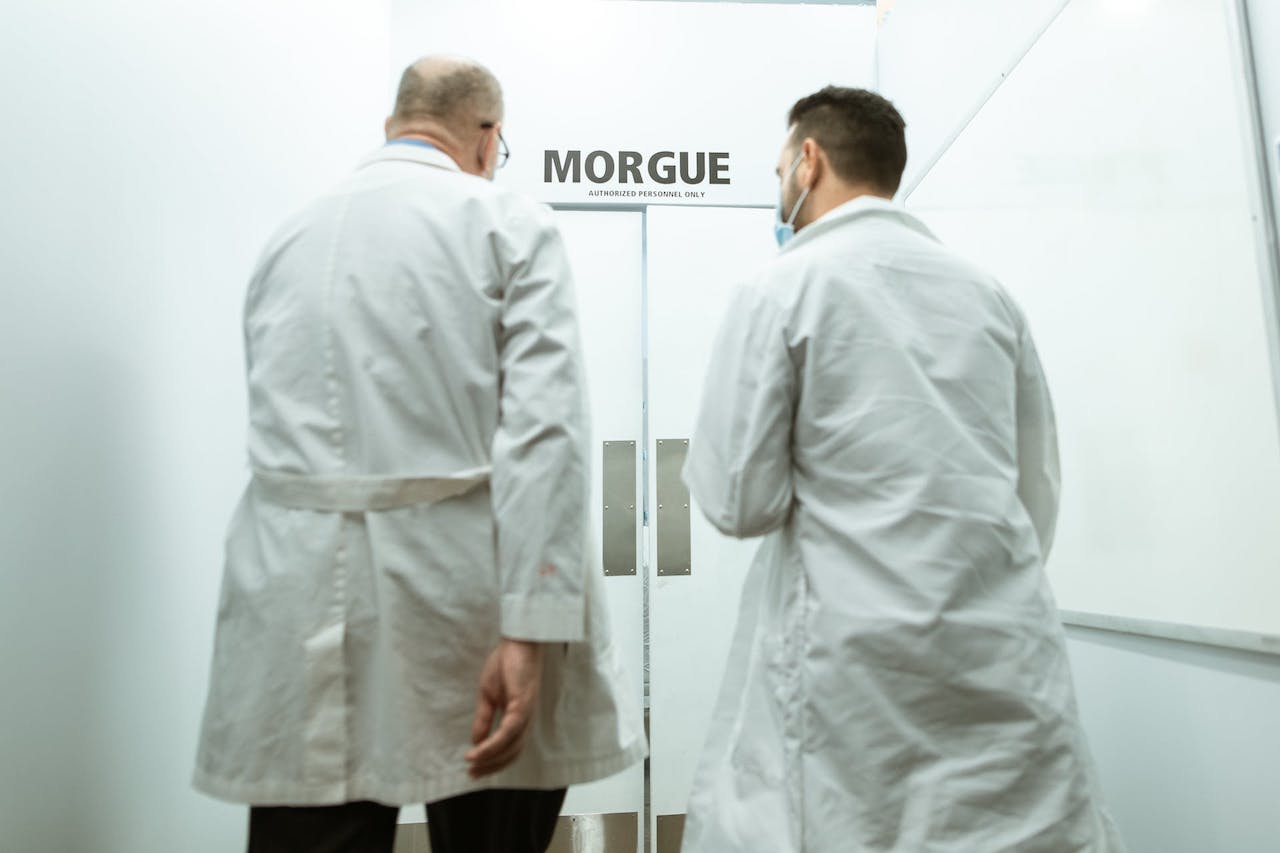Death is an inevitable and sometimes unfortunate aspect of life. Death investigations are often necessary when the cause of death is initially unclear, or there is some suspicion of foul play. In this guide, we’ll define the five most common manners of death referred to in death investigations and how the respective investigations play out.
What are Death Classifications?
Death classifications, often referred to as "manner of death" classifications, describe the circumstances or causes surrounding a person's death. These classifications help categorize deaths into specific groups based on the nature of the event or underlying causes. The determination of the manner of death typically involves a systematic and thorough investigation conducted by trained professionals, such as medical examiners, forensic pathologists, law enforcement, private detectives or investigators, and other experts.
Benefits of Knowing Manners of Death
Determining the manner of death is a critical aspect of death investigations with far-reaching implications, including legal, public health, safety, and support for families. It allows for the appropriate allocation of resources and actions necessary to address the circumstances surrounding a person's death and to prevent similar incidents from occurring.
Legal Purposes
Determining the manner of death is critical for law enforcement and the legal system to determine if any crimes have been committed. It helps authorities decide if a death should be investigated as a homicide, suicide, accidental death, or if it occurred due to natural causes. This classification guides the direction of the investigation and may lead to criminal charges if foul play is suspected.
Public Safety
Identifying accidental or homicidal deaths is essential for public safety. If a death is related to negligence, unsafe conditions, or criminal activity, it may be necessary to take measures to prevent similar incidents in the future. For example, identifying a pattern of accidental deaths due to a specific product can lead to product recalls or safety improvements.
Public Health
Knowing the manner of death is crucial for public health authorities. It helps in tracking trends and patterns related to deaths, which can inform public health policies and interventions. For instance, identifying a spike in drug-related deaths may lead to public health initiatives aimed at substance abuse prevention and treatment.
Statistics and Research
Accurate data on the manner of death is essential for compiling vital statistics. These statistics can be used for research and analysis to understand health trends, disease outbreaks, injury prevention, and other public health concerns. Researchers and policymakers rely on this information to make informed decisions.
Closure and Support for Families
Families of the deceased often seek closure and understanding of the circumstances surrounding the death of their loved ones. Determining the manner of death can provide answers and help families come to terms with the loss.
Insurance and Legal Proceedings
Insurance companies and legal entities may require information on the manner of death for various purposes, including insurance claims, inheritance, and civil lawsuits.
Forensic Science and Autopsy
Knowing the manner of death is essential for forensic pathologists and medical examiners who conduct autopsies. It guides the examination process and helps in identifying injuries, diseases, or toxic substances that may have contributed to the death.
Preventing Future Deaths
In cases of accidental deaths, understanding the manner of death can lead to safety improvements, regulatory changes, and public awareness campaigns aimed at preventing similar deaths in the future. For example, identifying the cause of a workplace accident can lead to improved safety regulations and practices.
5 Manners of Death
Here are the five most common manners of death referenced in death investigations by law enforcement officers and medical professionals.
1. Natural Death
A natural death is classified as a person who dies from natural causes, such as diseases or conditions related to aging. Common natural causes include heart disease, cancer, stroke, respiratory diseases, and various other medical conditions. In natural death investigations, the primary focus is on confirming the cause of death and ruling out foul play.
2. Accidental Death
An accidental death is a type of death that occurs as a result of unforeseen and unintentional events or incidents. Accidental deaths typically happen suddenly and unexpectedly, often due to circumstances beyond the control of the deceased person. These deaths are not the result of intentional actions, violence, or self-harm.
Accidental deaths can have various causes, including car accidents, falls, drownings, fires, electrocutions, drug overdoses, poisoning, industrial accidents, and natural disasters. The range of potential causes is extensive.
3. Suicidal Death
A suicidal death, also known as suicide, occurs when a person intentionally takes their own life. Suicidal deaths can have complex underlying causes, including mental health disorders, emotional distress, substance abuse, financial or interpersonal problems, and feelings of hopelessness. Many factors can contribute to a person's decision to end their own life.
4. Homicidal Death
A homicidal death, often referred to simply as homicide, occurs when a person dies as a result of another person's intentional actions. Homicide is a legal term used in death investigations to describe situations where one individual intentionally causes the death of another.
Homicides can take various forms, including first-degree murder, second-degree murder, manslaughter, and justifiable homicide (self-defense). The classification depends on the intent, premeditation, and circumstances surrounding the death.
Homicidal deaths are a serious matter and involve complex legal and investigative processes. They require the cooperation of law enforcement, forensic experts, and the criminal justice system to determine responsibility and provide justice for the victim and their family.
5. Undetermined Death
An undetermined death, also known as an undetermined manner of death, is a classification used in death investigations when the exact cause and manner of a person's death cannot be conclusively determined based on the available information and evidence. It represents a state of uncertainty in which the investigative team is unable to definitively categorize the death as natural, accidental, suicidal, or homicidal. This may be due to the complexity of the case, limited available information, conflicting evidence, or other factors.
Undetermined death classifications are relatively rare, as most deaths can be categorized into one of the established manners of death (natural, accidental, suicidal, or homicidal) once sufficient evidence is available. However, in complex or unclear cases, the undetermined classification allows for ongoing investigation and the potential reclassification of the death as more information becomes available.
Types of Death Investigation
There are different types of death investigations, and the type conducted depends on the circumstances surrounding the death.
Natural Death Investigations
Natural death investigations are generally more straightforward than other types of death investigations, as the primary goal is to confirm that the death resulted from medical conditions rather than external factors. The findings from these investigations can provide important information for family members, help settle legal and administrative matters, and contribute to vital statistics related to public health.
The deceased individual’s medical history, including preexisting medical conditions, treatments, medications, and recent illnesses, should be reviewed to understand the individual's health background. In many natural death cases, autopsies may not be required, especially if the cause of death is evident from medical records and history. However, in cases where there is uncertainty, or the death is unexpected, an autopsy may be necessary to examine the internal aspects of the body and confirm the cause of death.
While the primary focus of a natural death investigation is on the medical aspects, a basic scene examination is often required to ensure there are no unusual or suspicious circumstances at the location where the death occurred. This is particularly important in cases of unattended deaths, where the person dies without medical supervision.
Accidental Death Investigations
Accidental death investigations are essential for various purposes, including insurance claims, legal actions, workplace safety, and public awareness of potential hazards. These investigations aim to provide a clear understanding of how the accident occurred and whether any negligence or unsafe conditions contributed to the death.
A thorough examination of the accident scene is necessary to gather evidence, document the surroundings, and determine the factors that contributed to the accident. This includes noting the position of the body and any objects or vehicles involved. Photographs, videos, and detailed notes should also be taken to document the scene and any relevant evidence. This evidence may be used in legal proceedings, insurance claims, or accident reconstructions.
Private investigators should interview witnesses, including those who may have seen the accident or were involved in it. Witness statements can provide valuable insights into the circumstances leading up to the accident. PIs should also gather physical evidence related to the accident, including the personal belongings of the deceased, vehicle parts, or objects that may have played a role in the accident.
Suicidal Death Investigations
Suicide death investigations are emotionally charged and require sensitivity and professionalism. The primary goals are to determine the cause and manner of death, provide support for the deceased person's family, and contribute to suicide prevention efforts by identifying potential risk factors and areas for intervention.
Private investigators typically examine the scene of the suicide thoroughly to gather evidence and document the surroundings. This includes observing the position of the body, any objects present at the scene, and any potential notes or messages left behind. Investigators also typically conduct interviews with individuals who may have information about the events leading up to the suicide. This can include family members, friends, or anyone who was present or had contact with the deceased person in the days or hours preceding the suicide.
Investigators take photographs and detailed notes to document the scene, as well as collect physical evidence such as personal items of the deceased, any items used in the act, or any potential weapons that might have been used. This documentation and evidence are crucial for evidence and for legal and administrative purposes.
The decedent's medical and psychiatric records may be reviewed to understand their history of mental health treatment, medications, diagnoses, and previous suicide attempts, if any.
Homicide Investigations
Homicide investigations are complex and often require collaboration between various law enforcement or private investigative agencies and forensic experts. The ultimate goal is to identify and hold the perpetrator accountable for the crime and to provide justice for the victim and their family.
A comprehensive examination of the crime scene is critical during a homicide investigation. This includes documenting the position of the victim's body, any weapons or objects present, bloodstain patterns, and any other evidence that may provide insights into the crime. Physical evidence, such as clothing, weapons, bullets, and objects, is collected for analysis. Photographs, videos, sketches, and detailed notes are usually taken to document the crime scene and evidence.
Law enforcement and investigators interview witnesses, potential suspects, and any other individuals with relevant information. Witness statements can be crucial in understanding what transpired in the homicide.
Learn more: PI’s Guide to Investigating a Suspicious Death
Undetermined Death Investigations
Undetermined death investigations are often challenging due to the lack of clear evidence or circumstances surrounding the death. The objective is to provide the most accurate determination possible, and when the cause and manner of death remain unclear, investigators may continue to gather information and reevaluate the case as new evidence becomes available.
A thorough examination of the scene is necessary in order to find clues to the cause of death. Investigators usually observe the position and location of the body as well as any objects present. Photos and other documentation are necessary as investigators will often review this information in undetermined death investigations.
Private investigators also conduct interviews with witnesses, family members, friends, or anyone who may have information about the events leading up to the death. These interviews aim to uncover any relevant details.
In some cases, an autopsy may be performed to examine the internal aspects of the body, especially when the cause of death remains uncertain. Toxicology tests may also be conducted to determine the presence of drugs, alcohol, or other substances in the deceased person's system that could have contributed to the death.
Death Investigations Demystified
Properly identifying the manner of death in a death investigation is crucial for public safety, for the deceased family’s peace of mind, and for bringing any perpetrators to justice. If you are a private investigator seeking to expand your knowledge regarding death investigations, consider taking our course on the different types of death investigations. This training covers the different types of death investigations, real case examples, interviewing, evidence, and environments relating to a death investigation.
View Course: Different Types of Death Investigations →
NITA is the number one partner for on-demand continuing education and professional development for private investigators. Learn online, at your own pace, and bolster your career as a private investigator with NITA!
You might also like:
Our enrollment counselors are here to answer any questions you might have about our state- and board-approved status, pre-licensing training, or professional development programs.




